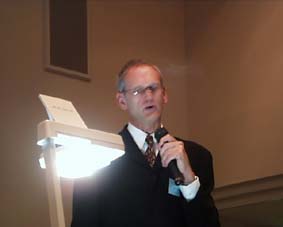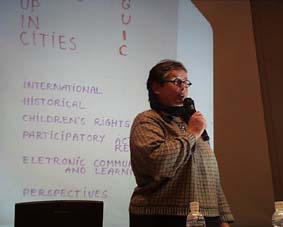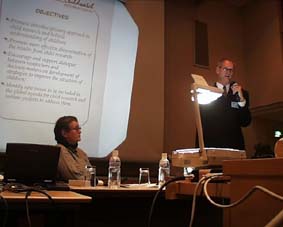|
CHILDWATCH INTERNATIONAL RESEARCH NETWORK Dr. Per Miljeteig and Ms. Marie Louise Bistrup 1. BACKGROUND  Childwatch International emerged in 1993 from a process of informal consultations among child researchers from different parts of the world. They had various disciplinary backgrounds, thematic interests and represented various kinds of academic and research institutions. What they shared was a wish for more regularised contact and collaboration. They wanted a better overview of research activities within various disciplines in order to exchange information and to initiate new projects in areas of common concern. They were also concerned with the possible implications of the UN Convention on the Rights of the Child for their research. For a starter, the Convention had given them a common language for discussing how research could benefit children, and support the implementation of the Convention.
Childwatch International emerged in 1993 from a process of informal consultations among child researchers from different parts of the world. They had various disciplinary backgrounds, thematic interests and represented various kinds of academic and research institutions. What they shared was a wish for more regularised contact and collaboration. They wanted a better overview of research activities within various disciplines in order to exchange information and to initiate new projects in areas of common concern. They were also concerned with the possible implications of the UN Convention on the Rights of the Child for their research. For a starter, the Convention had given them a common language for discussing how research could benefit children, and support the implementation of the Convention.
|
 The establishment of Childwatch coincided with an increasing demand for knowledge and information on the situation of children and children's rights raised by those involved on the practical side in the implementation of the Convention. Governments, intergovernmental organisations and non-governmental organisations were looking towards the research community for its contribution. Childwatch wants to play a facilitating role in this dialogue between researchers, policy makers and practitioners, and has already been working with UNICEF and various non-governmental institutions. The Committee on the Rights of the Child has also approached Childwatch with requests for more research related to monitoring children's rights.
The establishment of Childwatch coincided with an increasing demand for knowledge and information on the situation of children and children's rights raised by those involved on the practical side in the implementation of the Convention. Governments, intergovernmental organisations and non-governmental organisations were looking towards the research community for its contribution. Childwatch wants to play a facilitating role in this dialogue between researchers, policy makers and practitioners, and has already been working with UNICEF and various non-governmental institutions. The Committee on the Rights of the Child has also approached Childwatch with requests for more research related to monitoring children's rights. |
 Against this backdrop, Childwatch defines itself as a response of the international research community to the challenges posed by Convention on the Rights of the Child and other efforts to improve the situation of children. In addition to alerting researchers to issues related i.a. to the implementation of the Convention, the network is encouraging researchers to address policy makers and decision makers at global and national levels with the outcome of their research.
Against this backdrop, Childwatch defines itself as a response of the international research community to the challenges posed by Convention on the Rights of the Child and other efforts to improve the situation of children. In addition to alerting researchers to issues related i.a. to the implementation of the Convention, the network is encouraging researchers to address policy makers and decision makers at global and national levels with the outcome of their research.
|
| 2. THE NETWORK The network now has a core of about 30 institutions world-wide that work closely together to establish Childwatch as a tool for their international cooperation. The directors of these institutions met recently in Charleston, South Carolina to review their further collaboration and to discuss new projects, particularly with a view to support capacity building within child research. The meeting also elected a new 10 member Advisory Board with the following members: |
| Gary Melton (President) Director, Consortium on Children, Families & the Law, Institute for Families in Society, University of South Carolina, USA Irene Rizzini (Vice President) Director, Center for Research on Childhood, Universidade Santa Ursula, Brazil Per Egil Mjaavatn (Vice President) Research Fellow, The Norwegian Centre for Child Research, Norway Jack Habib Director, JDC -Brookdale Institute Center for Children and Youth, Israel Nittaya J. Kotchabhakdi Director, National Institute for Child & Family Development, Mahidol University, Thailand Harry McGurk Director, Australian Institute of Family Studies, Australia Rodrigo Quintana Mel Odez Director, Instituto Interamericano del Ni, o, Uruguay Fanie Sonn Director, Institute for Child and Family Development, University of the Western Cape, South Africa Sharon Stephens Assistant Professor of Anthropology and Social Work, University of Michigan, USA Ferran Casas Professor, Departament Psicologia Social, Universitat Barcelona, Spain The network has a small secretariat based at the University of Oslo in Norway, that serves as the coordinator for the various activities. |
| 3. OBJECTIVES Childwatch defines its objectives as follows: To promote an inter-disciplinary approach to child research and a holistic understanding of children; To promote more effective dissemination of the results from child research to the general public; To encourage and support a dialogue between researchers and decision-makers on the development of strategies for the implementation of the Convention on the Rights of the Child and other international agreements concerning child welfare; To identify new issues to be included in the global agenda for child research and initiate projects to address them. To support capacity building and capacity strengthening within the field of child research, particularly in developing countries. |
| 4. ACTIVITIES Since its inception, Childwatch has explored a variety of ways to promote the network and to gain experience, and Childwatch initiated activities include: Research projects, such as Indicators for Children's Rights, an effort to identify already existing data to use in monitoring implementation of the Convention and test its applicability in some selected countries; Identifying new research areas or defining new approaches to old ones, such as Children and Environment; Facilitating and assisting activities to develop and strengthen research capacity in areas relevant to children's development and well-being; Taking advantage of Internet and other electronic communication tools, to develop effective information exchange and interaction between researchers and research institutions, and to create data bases on ongoing child research etc. |
| Childwatch activities are carried out and coordinated in close cooperation between the Key Institutions and their partners and the Secretariat. Particularly the development of a well-functioning information strategy has been given high priority in the initial phase, taking advantage of the opportunities that Internet gives. Information about the Key Institutions and their research and information activities are placed on the WorldWideWeb in a format that makes search for specific information easy. We are also trying to use Internet and the WorldWideWeb actively as a tool for communication among the members of our network and our partners. More information about Childwatch and its activities, and links to relevant data bases can be found at our home page: http://childhouse.uio.no/childwatch/ |
| 5. CHILDREN'S HOUSE IN CYBERSPACE Together with Key Institutions and other organisations involved in children's issues, particularly within programming, Childwatch has established Children's House in Cyberspace, an electronic meeting place where professionals can exchange information that serves the well-being of children, and translate the benefits of research and programming into policy and practice. Through the WorldWideWeb, reliable information regarding ongoing activities within research, programming, international events, electronic conferences and interactive databases can be provided. Children's House is meant to serve as an instrument for dialogue, discussion and dissemination of knowledge on the situation of children. Among the prominent features of Children's House are listings of relevant resources, announcements of child related events, electronic workshops and data bases. |
| You can visit Children's House in Cyberspace at http://childhouse.uio.no. Childwatch International P.O.Box 1132 Blindern N-0317 OSLO, Norway tel: +47-22 85 42 88, fax: +47-22 85 50 28 e-mail: childwatch@uio.no www home page: http://childhouse.uio.no/childwatch/ |